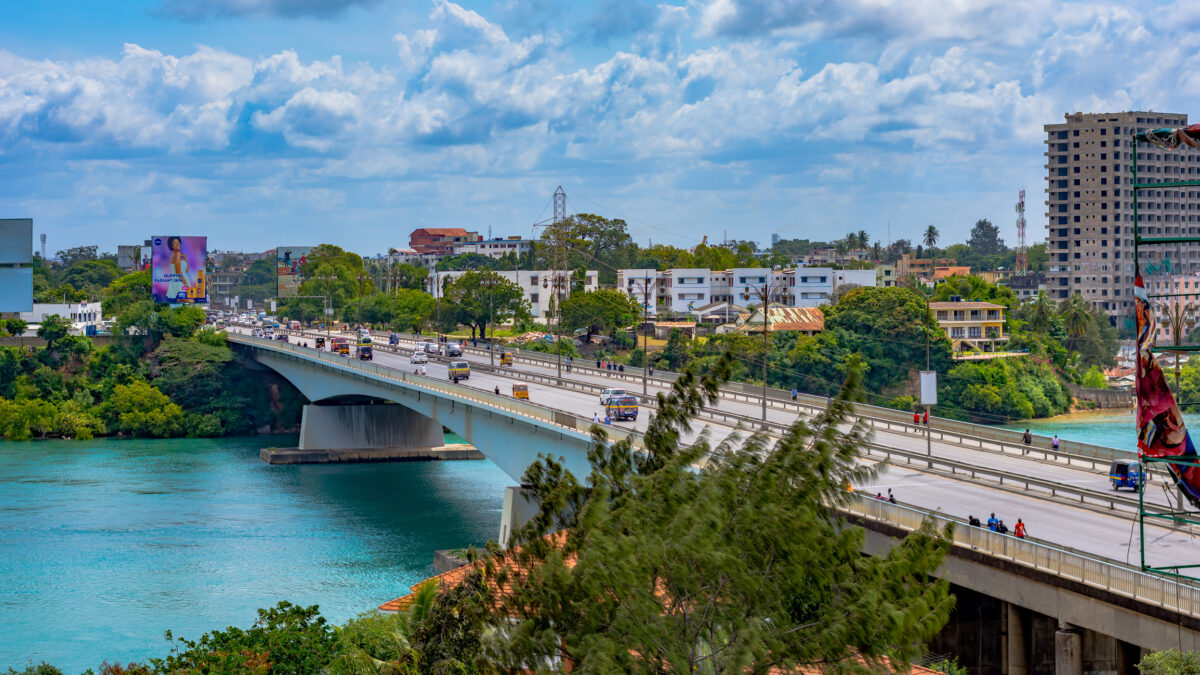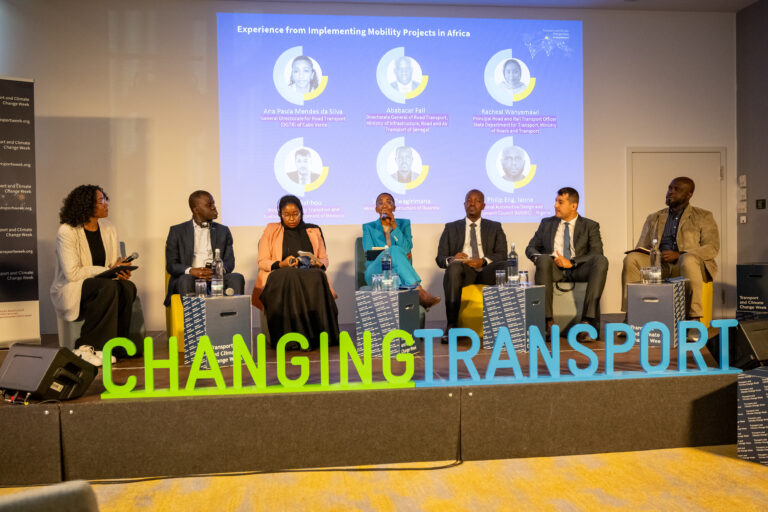From Roadmap to Investment: Investors Consultation on Mobilizing Finance For Climate-resilient Infrastructure in Kenya – Global Center on Adaptation

Report on the Investors Consultation for Mobilizing Finance for Climate-Resilient Infrastructure in Kenya
Introduction: Aligning Infrastructure Investment with Sustainable Development Goals
A consultation co-hosted by the University of Nairobi and the Global Center on Adaptation (GCA) aims to establish practical pathways for financing climate-resilient infrastructure in Kenya. This initiative is a key component of the Africa Adaptation Acceleration Program (AAAP) and seeks to operationalize the National Roadmap for Climate Resilient Infrastructure. The primary focus is on mobilizing investment to advance several Sustainable Development Goals (SDGs), particularly SDG 9 (Industry, Innovation, and Infrastructure), SDG 13 (Climate Action), and SDG 17 (Partnerships for the Goals).
Analysis of Climate Risk and its Impact on Sustainable Development
Economic and Social Vulnerabilities
Kenya’s critical infrastructure, which underpins its economic and social fabric, faces significant and escalating risks from climate change. The economic cost of climate impacts has been substantial, estimated at 3–5% of the national GDP annually over the last decade, directly impeding progress towards SDG 8 (Decent Work and Economic Growth). Future climate models indicate a trend towards more extreme weather conditions, making immediate action imperative. Investing in climate-resilient infrastructure, while potentially adding 3% to upfront costs, is projected to yield a benefit-cost ratio of approximately 4:1, ensuring long-term sustainability and economic returns.
The National Roadmap for Climate-Resilient Infrastructure
The National Roadmap serves as a comprehensive strategic framework to address these challenges. Developed through a multi-stakeholder process that exemplifies SDG 17 (Partnerships for the Goals), it involved government agencies, academic institutions, and international partners. The Roadmap provides a structured, evidence-based approach to integrate climate resilience across key sectors, thereby supporting the achievement of multiple SDGs:
- SDG 6 (Clean Water and Sanitation): By mapping vulnerabilities in the water sector.
- SDG 7 (Affordable and Clean Energy): By identifying climate risks to the energy grid.
- SDG 9 (Industry, Innovation and Infrastructure): By prioritizing adaptation measures for transport and ICT networks.
- SDG 11 (Sustainable Cities and Communities): By safeguarding the infrastructure systems that enable urban and rural communities to thrive.
Consultation Objectives and Thematic Areas
Primary Objectives of the Consultation
Leveraging the analytical work of the National Roadmap, the consultation is designed to unite key stakeholders, including Kenyan institutions, development finance institutions, and private sector investors. The core objectives are:
- To showcase a pipeline of prioritized, data-driven project concepts spanning the transport, energy, water, and ICT sectors, designed to address key climate vulnerabilities and support sustainable growth in line with the 2030 Agenda.
- To facilitate a moderated discussion on viable financing and implementation models for these climate-resilient infrastructure projects.
- To forge and strengthen partnerships essential for scaling investment and action, directly contributing to SDG 17.
Expected Outcomes and Future Directives
Translating Strategy into Bankable Investments
The principal outcome of this consultation is to inform and accelerate the operationalization of Kenya’s National Roadmap. It is expected to facilitate the transition of prioritized project concepts into bankable investments ready for financing and implementation. This process is critical for accelerating investment in climate adaptation and resilience, thereby ensuring that Kenya’s development trajectory is both sustainable and robust in the face of climate change, making a direct contribution to the achievement of SDG 9 and SDG 13.
Analysis of Sustainable Development Goals (SDGs) in the Article
1. Which SDGs are addressed or connected to the issues highlighted in the article?
-
SDG 9: Industry, Innovation and Infrastructure
- The article’s central theme is investing in and developing “climate-resilient infrastructure” in Kenya, specifically mentioning the transport, energy, water, and ICT sectors. This directly aligns with the goal of building resilient infrastructure.
-
SDG 13: Climate Action
- The initiative is a direct response to “growing climate risks” and aims to implement “priority adaptation investments.” The entire “National Roadmap for Climate-Resilient Infrastructure” is an effort to take urgent action to combat climate change and its impacts.
-
SDG 11: Sustainable Cities and Communities
- By focusing on safeguarding national infrastructure systems (transport, water, energy, ICT) against climate impacts, the article addresses the need to make human settlements inclusive, safe, resilient, and sustainable. The mention of economic losses (3-5% of GDP) due to climate impacts relates to reducing the adverse effects of disasters.
-
SDG 17: Partnerships for the Goals
- The article highlights a “multi-stakeholder process” involving the University of Nairobi, GCA, government agencies, academic institutions, international partners, development finance institutions, and private sector partners. The consultation itself is an act of strengthening partnerships to achieve sustainable development.
-
SDG 6: Clean Water and Sanitation & SDG 7: Affordable and Clean Energy
- The article explicitly identifies the “water” and “energy” sectors as key areas for developing climate-resilient infrastructure. Ensuring the resilience of these sectors is fundamental to achieving universal access to water and energy.
2. What specific targets under those SDGs can be identified based on the article’s content?
-
Target 9.1: Develop quality, reliable, sustainable and resilient infrastructure.
- The article is entirely focused on this, aiming to make Kenya’s infrastructure “robust and adaptable to climate” and creating a “National Roadmap for Climate-Resilient Infrastructure.”
-
Target 9.a: Facilitate sustainable and resilient infrastructure development in developing countries through enhanced financial, technological and technical support.
- The investors’ consultation is designed to “mobilize finance” and bring together “development finance institutions, domestic investors, and private sector partners” to advance investments in Kenya.
-
Target 13.1: Strengthen resilience and adaptive capacity to climate-related hazards and natural disasters in all countries.
- The initiative is a “comprehensive response” to challenges posed by climate risks, aiming to “prioritize adaptation measures” and integrate climate resilience into national infrastructure.
-
Target 11.5: Significantly reduce the number of deaths and the number of people affected and substantially decrease the direct economic losses relative to global gross domestic product caused by disasters.
- The article provides a direct link by stating that “Climate impacts have already cost the country an estimated 3–5% of GDP annually,” which the resilient infrastructure aims to mitigate.
-
Target 17.17: Encourage and promote effective public, public-private and civil society partnerships.
- The consultation is a clear example of this target in action, as it “will bring together leading Kenyan institutions, development finance institutions, domestic investors, and private sector partners” to “shape partnerships for scaling investment.”
3. Are there any indicators mentioned or implied in the article that can be used to measure progress towards the identified targets?
-
Direct economic loss as a percentage of GDP:
- The article explicitly states that “Climate impacts have already cost the country an estimated 3–5% of GDP annually.” This figure serves as a baseline indicator to measure the success of resilience measures in reducing economic losses from climate-related disasters.
-
Amount of investment mobilized for resilient infrastructure:
- The event’s primary goal is to “mobilize finance” and translate “project concepts into bankable investments.” The total amount of funding committed and disbursed for the prioritized projects would be a direct indicator of progress.
-
Benefit-cost ratio of adaptation investments:
- The article mentions that making infrastructure resilient can “bring a benefit-cost ratio of about 4:1.” This ratio is a key performance indicator used to assess the economic efficiency and long-term benefits of the investments made.
-
Number of resilient infrastructure projects implemented:
- The initiative has created a “data-driven national pipeline of projects.” The number of these projects that are successfully financed and implemented across the transport, energy, water, and ICT sectors is a tangible indicator of progress towards Target 9.1.
-
Number of multi-stakeholder partnerships formed:
- The expected outcome is to “strengthen collaborations to accelerate investment.” The number of formal partnerships established between the government, private investors, and development finance institutions as a result of the consultation would be an indicator for Target 17.17.
4. Summary of SDGs, Targets, and Indicators
| SDGs | Targets | Indicators |
|---|---|---|
| SDG 9: Industry, Innovation and Infrastructure | 9.1: Develop quality, reliable, sustainable and resilient infrastructure. 9.a: Facilitate sustainable and resilient infrastructure development in developing countries. |
|
| SDG 13: Climate Action | 13.1: Strengthen resilience and adaptive capacity to climate-related hazards. |
|
| SDG 11: Sustainable Cities and Communities | 11.5: Substantially decrease the direct economic losses relative to GDP caused by disasters. |
|
| SDG 17: Partnerships for the Goals | 17.17: Encourage and promote effective public, public-private and civil society partnerships. |
|
| SDG 6 & 7: Water and Energy | Targets related to ensuring universal access through reliable and sustainable infrastructure (e.g., 6.1, 7.1). |
|
Source: gca.org
What is Your Reaction?
 Like
0
Like
0
 Dislike
0
Dislike
0
 Love
0
Love
0
 Funny
0
Funny
0
 Angry
0
Angry
0
 Sad
0
Sad
0
 Wow
0
Wow
0
















































/environment-climate-change-and-health-(ech)/water-sanitation-hygiene-and-health-(wsh)/landfill-tuvalu-36092.tmb-1200v.jpg?sfvrsn=5c21fe40_1#)

.jpg.webp?itok=0ZsAnae9#)


























